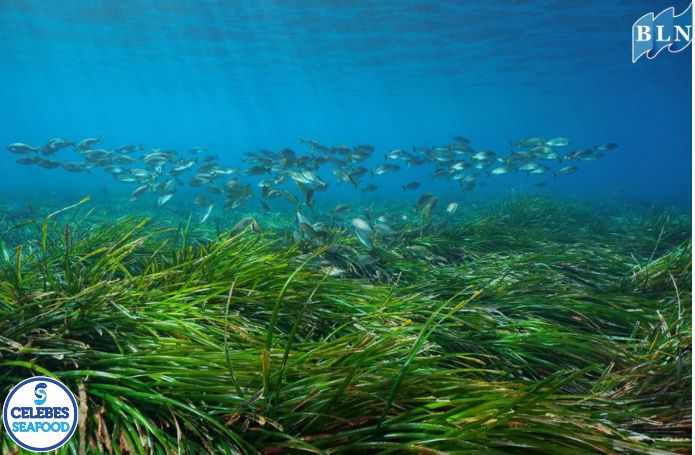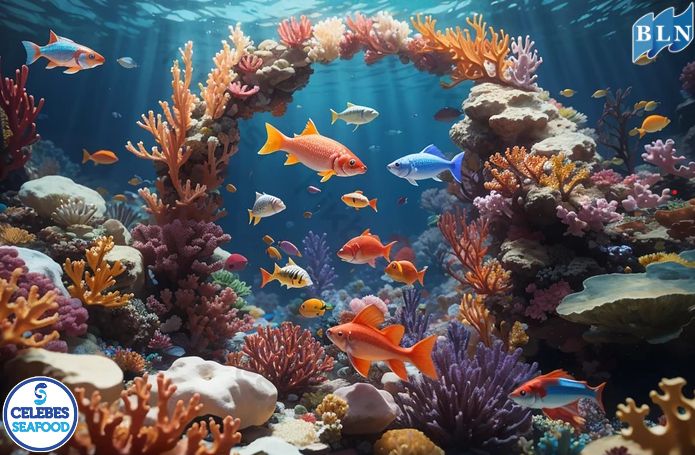Getting Acquainted With The Marlin
By. Rani - 06 May 2025
lautnusantara.com Marlin are a group of large pelagic fish known for their long, spear-like bill (rostrum), prominent dorsal fin, and very fast swimming abilities. They are apex predators in tropical and subtropical oceans worldwide.
Here are some important points about marlin:
- Belong to the family Istiophoridae: This family also includes swordfish and sailfish.
- Distinctive bill: Their long and pointed bill is a key feature that distinguishes them from other fish.
- Skilled predators: They prey on various types of smaller fish, squid, and crustaceans.
- Fastest swimmers: Marlin are known as some of the fastest fish in the sea, capable of reaching very high speeds.
- Live in the open ocean: They are pelagic fish that are not tied to the seabed or coastal areas.
- Target of fisheries and sport: Marlin are an important target for commercial fisheries and are very popular in sport fishing.
- Several species are threatened: Some marlin populations are declining due to overfishing and other threats, making conservation efforts important.
Classification and General Characteristics:
- Classification: Marlin belong to the family Istiophoridae, which also includes swordfish and sailfish. They are a group of large pelagic fish known for their long, spear-like bill (rostrum).
- Main Species: Some of the most well-known marlin species include:
- Atlantic Blue Marlin (Makaira nigricans): One of the largest fish in the world.
- Indo-Pacific Blue Marlin (Makaira mazara): Often considered a different species from the Atlantic blue marlin.
- Black Marlin (Istiompax indica): Found in the Indo-Pacific, known for its strength.
- Striped Marlin (Kajikia audax): Smaller than blue and black marlin, widely distributed.
- White Marlin (Kajikia albida): Found in the Atlantic Ocean.
- Shortbill Spearfish (Tetrapturus angustirostris): Often considered a close relative of marlin.
- Physical Characteristics:
- Bill (Rostrum): The most distinctive feature, used to injure or stun prey.
- Dorsal Fin: Long and prominent in some species, such as the striped marlin.
- Caudal Fin (Tail Fin): Forked and powerful, aiding in swimming speed.
- Scales: Small and embedded in the skin, giving a smooth texture.
- Color: Varies depending on the species, often blue, black, or silvery with vertical stripes.
2. Habitat and Distribution:
- Marlin are pelagic fish, meaning they live in the open ocean and are not tied to the seabed or coastal areas.
- They are found in tropical and subtropical waters worldwide, including the Atlantic, Pacific, and Indian Oceans.
- Some species exhibit significant migration patterns, following the movement of prey and changes in water temperature.
Read Also : Between Sky and Sea: How Weather Influences Fishermen's Success
3. Behavior and Ecology:
- Apex Predators: Marlin are apex predators in marine ecosystems. They prey on various types of smaller fish, squid, and crustaceans.
- Hunting Techniques: They use their speed and bill to attack prey. Some experts believe the bill is used to injure or stun prey, while others suggest it helps in separating a single prey item from a group.
- Swimming Speed: Marlin are known to be very fast swimmers. Some estimates suggest they can reach speeds of up to 110 km/h (68 mph), making them one of the fastest fish in the sea.
- Solitary: Marlin are generally solitary animals and do not form large groups.
4. Life Cycle and Reproduction:
- The life cycle of marlin varies among species, but generally they have relatively rapid growth and reach sexual maturity at a few years of age.
- Spawning usually occurs in warm waters, and females can release millions of eggs into the water (pelagic spawning).
- Marlin eggs and larvae are planktonic and drift in ocean currents before developing into juvenile individuals.
5. Interaction with Humans:
- Fisheries: Marlin are an important target for commercial and recreational (sport fishing) fisheries. Some populations are under pressure due to overfishing.
- Sport Fishing: Marlin fishing is considered a major and prestigious challenge due to the size, strength, and speed of these fish. Catch and release practices are becoming increasingly popular to aid conservation.
- Conservation: Several marlin species face threats of population decline due to overfishing, habitat destruction, and climate change. Conservation efforts are increasingly important to ensure their long-term survival.
6. Uniqueness and Appeal:
- Beauty and Elegance: The streamlined body shape, beautiful colors, and graceful movements make marlin captivating marine creatures.
- Symbol of Strength and Freedom: As rulers of the open ocean, marlin are often symbols of power, speed, and freedom.
- Mystery: Their lives in the deep ocean and long-distance migrations still hold many mysteries for scientists.
Overall, marlin are remarkable group of fish with an important ecological role and a strong appeal to humans. Understanding their biology, behavior, and the threats they face is a crucial step in conservation efforts to ensure their continued existence in the future."
If you are interested in our product CALAMARI WHOLE ROUND, CUTTLEFISH WHOLE ROUND please do not hesitate to contact us through email and/or whatsapp.







